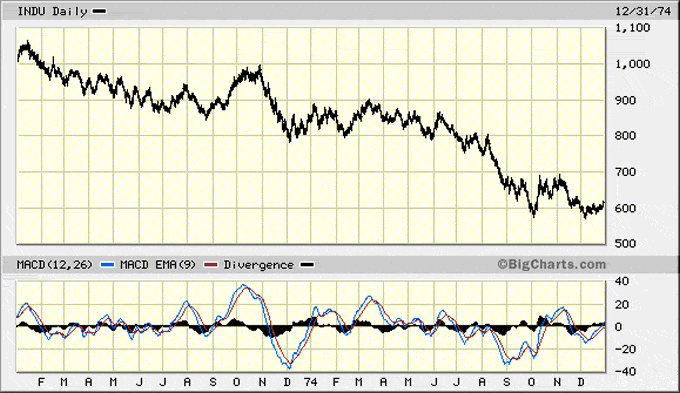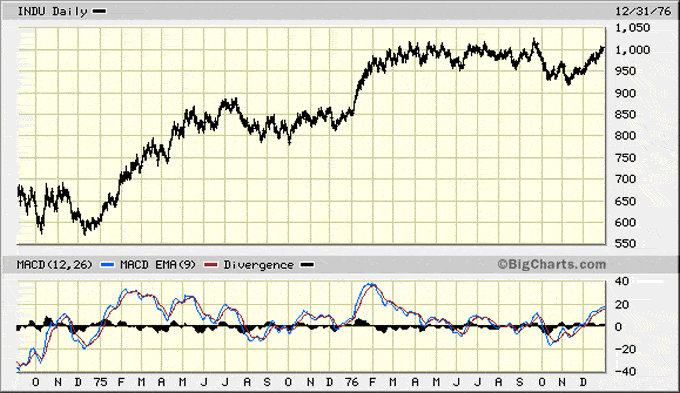Results 1 to 1 of 1
Thread Information
Users Browsing this Thread
There are currently 1 users browsing this thread. (0 members and 1 guests)
-
01-16-2010, 10:00 PM #1Senior Member


- Join Date
- May 2007
- Location
- South West Florida (Behind friendly lines but still in Occupied Territory)
- Posts
- 117,696
What Stock Market Crash History Tells Us To Expect For 2010
What Stock Market Crash History Tells Us To Expect For 2010
Stock-Markets / Stock Markets 2010 Jan 16, 2010 - 01:10 PM
By: Clif_Droke
Stock-Markets Best Financial Markets Analysis ArticleMany have wondered why the 10-year cycle peak in late September/early October didnât produce a more meaningful correction in the broad market. Instead, the 10-year cycle peak produced only a marginal six percent pullback in the S&P 500 Index (SPX) instead of the much deeper one usually associated with the 10-year peak.
A look at the past reveals why: the first full year following a crash low has never produced a sizable correction in the stock market. That historical truism certainly proved itself out in 2009. But what of the second year after a crash? What can we expect in the coming year based on market history? Weâll be taking up this question in the commentary that follows.
The two most persistent traits that investors displayed in 2009 were either the avoidance of the stock market altogether by remaining in the safety of cash or else to look for opportunities to sell short each time the market took so much as a breather. Both of these tendencies were direct consequences of the historic credit crisis of 2008. It has long been observed that retail investors typically shy away from equities for at least the first two years following a major bear market or stock market crash. The painful memories take time to heal and leave deep and abiding scars.
Even for those stalwarts who stay the course and continue trading and investing, a market crash creates a tendency toward conservatism. Traders tighten up protective stops on all their trades, avoid over-trading, refuse to buy large positions in any one stock and make a serious effort at avoiding the mistakes that were made during the heady days of the forgiving bull market. Indeed, the reversion to conservatism and self-examination among market participants is one of the redeeming qualities of a market crash. Bear markets are purgative in that they cleanse the system of lavish excesses and restore a sense of propriety to the market by and large.
For those investors who respond to the destruction wrought by a crash by refusing to participate, the resulting effect is equally beneficial to the overall soundness of the market. These non-participants, who comprise the great majority of all potential retail investors, will spend the next year building cash reserves and restoring their personal balance sheets. While this wonât necessarily be of any benefit to the stock market, nor to those who make their living in the brokerage or advisory business, it will act as a reserve â or liquidity bank if you will â for the future. For at some point the market will need this liquidity and by the time those reserves are needed, the painful memories of the previous bear market will have dissolved from the publicâs collective memory. As their confidence grows they will become more enticed by the lure of the potential returns of stocks vis-Ã*-vis the low-yielding safety of the bond market.
Returning to our original observation concerning market behavior in the 1-2 years following a crash, letâs examine some chart examples of the past few bear markets. Perhaps the single best example and the one that most closely correlates to our time is the crash of 1973-74. This particular bear market was a function of the Kress 40-year cycle, which bottomed in October 1974. It produced a painful and persistent decline in the S&P 500 for the better part of two years, as well as an economic recession. At the time this happened it was the worst bear market stocks had suffered since the Great Depression. By the time it ended the SPX had lost some 45% of its value. As you can well imagine (and some of you may actually remember it), the feeling at the bottom in October â74 was one of unmitigated doom and gloom â a feeling that persisted in the publicâs mind well beyond 1974.

The market was anything but forlorn in the two years following this bear market. In the year 1975 the stock market rallied vigorously and with relatively mild corrections along the way. The Dow Jones Industrial Average (DJIA) rallied 100 percent in â75, a record performance following a bear market and one that stands to this day. The market continued its recovery into 1976, and although its â76 performance wasnât anywhere near as stellar as the one in â75 it remains immune to major corrections and kept the recovery going for two full years following the bear market low in 1974.

Of course the market cycles which comprised the 1973-74 bear market were considerably different than the cycles underlying the 2007-08 bear market. Yet the market dynamics between the two eras are so remarkably similar that the inference can still be drawn that ours is a situation analogous to the 1975-76 recovery.
Notice in the above chart of the Dow that the 1976 follow-up to the explosive 1975 rally was much more volatile and less dynamic, yet it was still a positive year overall for the Dow. The possibility exists that 2010 could end up being a positive year overall in spite of the 4-year cycle bottoming later this year. The inference that can definitely be made is that the coming year will almost certainly show more bumpiness than 2009 and less dynamic market action.
If 1976 holds any clues for how 2010 will play out then we can expect more range-bound behavior from the major indices. This means stock selection will become more important as the sectors showing only the best relative strength, forward momentum and earnings growth should be favored over weaker sectors. The coming year is likely to reward good stock selection as opposed to the âbuy with both handsâJoin our efforts to Secure America's Borders and End Illegal Immigration by Joining ALIPAC's E-Mail Alerts network (CLICK HERE)


 LinkBack URL
LinkBack URL About LinkBacks
About LinkBacks




 Reply With Quote
Reply With Quote

500,000 Illegals Caught on Arizona Ranch
05-02-2024, 09:08 AM in illegal immigration News Stories & Reports